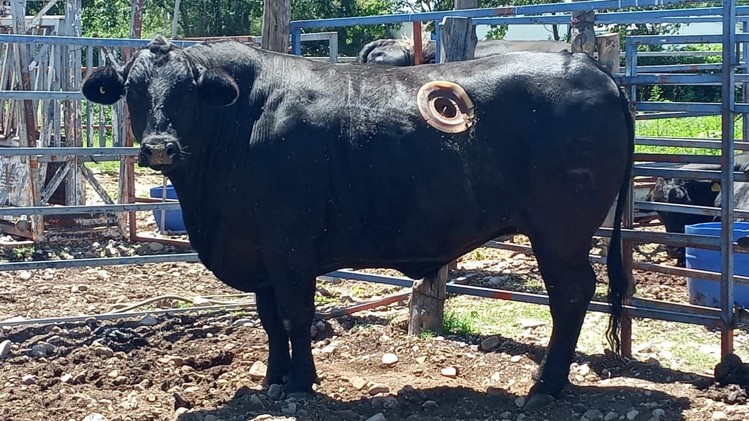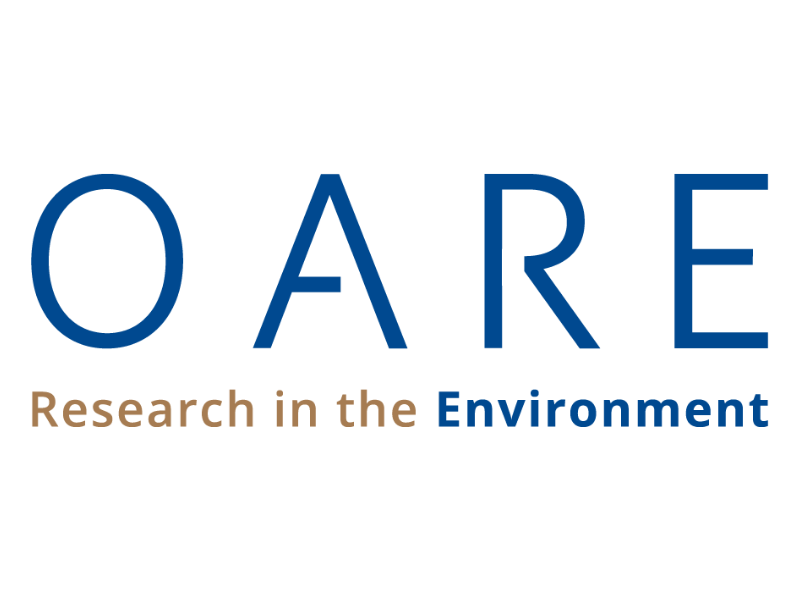Caracterización nutricional y producción de gas de especies vegetales con potencial alimenticio para la alimentación de rumiantes
Nutritional characterization and gas production of vegetative species with potential as feedstuffs for ruminants feeding


Esta obra está bajo una licencia internacional Creative Commons Atribución-NoComercial-CompartirIgual 4.0.
Mostrar biografía de los autores
Objetivo. Evaluar la composición química, contenido de compuestos fenólicos, cinética de producción de gas y emisiones de metano in vitro de siete especies vegetales con potencial alimenticio para alimentación de rumiantes. Materiales y métodos. Siete especies fueron evaluadas: encino gris (EG), encino rojo (ER), chicalote (CHIC), mezquite (MEZ), huizache (HUI), morera (MOR) y la estevia (STE). Los análisis de las muestras fueron: extracto etéreo (EE), cenizas (Cen), proteína cruda (PC), carbohidratos no estructurales (CNE), fibra en detergente neutro (FDN), fibra en detergente ácido (FDA), hemicelulosa, celulosa, lignina detergente ácida (LDA), taninos condensados (TC) y fenoles totales (FT), digestibilidad in vitro de la materia seca (DIVMS); así como las condiciones ruminales in vitro, producción de gas (PG), producción de metano y dióxido de carbono, nitrógeno amoniacal (N-NH3) y ácidos grasos volátiles (AGV´s). Resultados. Los resultados muestran que HUI, MEZ y MOR presentaron un mayor contenido de PC, las mayores digestibilidades (DIVMS) se observaron en CHIC, HUI y STE. De lo contrario, las producciones de metano más bajas fueron generadas por MEZ, ER Y HUI. Conclusiones. De acuerdo con los resultados en la composición química, CHIC, MOR y STE presentaron la mejor calidad nutricional ya que mostraron los más altos contenidos de proteína y una digestibilidad adecuada. Estos resultados sugieren que el uso de CHIC no afectaría las características nutricionales que ofrece un forraje de buena calidad. Además, las otras especies pueden usarse como aditivos o suplementos para alimentar a los rumiantes debido a su mayor contenido de proteína y taninos condensados.
Visitas del artículo 705 | Visitas PDF
Descargas
- Singh B, Todaria NP. Nutrients composition changes in leaves of Quercus semecarpifolia at different seasons and altitudes. Ann For Res. 2012; 55(2):189-196. http://afrjournal.org/index.php/afr/article/view/59
- Pavarini D, Pavarini S, Niehues M, Lopes N. Exogenous influences on plant secondary metabolite levels. Anim Feed Sci Technol. 2012; 176:5-16. https://doi.org/10.1016/j.anifeedsci.2012.07.002
- Tavendale MH, Meagher LP, Pacheco D, Walker N, Attwood GT, Sivakumaran S. Methane production from in vitro rumen incubations with Lotus pedunculatus and Medicago sativa, and effects of extractable condensed tannin fractions on methanogenesis. Anim Feed Sci Technol. 2005; 123(124):403–419. https://doi.org/10.1016/j.anifeedsci.2005.04.037
- Knapp JR, Laur GL, Vadas PA, Weiss WP andTricarico JM. Invited review: Enteric methane in dairy cattle production: Quantifying the opportunities and impact of reducing. J Dairy Sci. 2014; 97:3231-3261. https://doi.org/10.3168/jds.2013-7234
- Rocha-Guzmán NE, Gallegos-Infante JA, González-Laredo RF, Reynoso- Camacho R, Ramos-Gómez M, García-Gasca T. Antioxidant activity and genotoxic effect on HeLa cells of phenolic compounds from infusions of Quercus resinosa leaves. Food Chem. 2009; 115:1320–1325. https://doi.org/10.1016/j.foodchem.2009.01.050
- Abdel SE, Maes L, Mahmoud SM. In vitro activities of plant extracts from Saudi Arabia against malaria, leishmaniasis, sleeping sickness and chagas disease. Phytother Res. 2010; 24:1322-1328. https://doi.org/10.1002/ptr.3108
- Sytar O, Borankulova A, Shevchenko Y, Wendt A, Smetanska I. Antioxidant activity and phenolics composition in Stevia rebaudiana plants of different origin. J Microbiol Biotechnol Food Sci. 2016; 5(3):221-224. https://doi.org/10.15414/jmbfs.2015.16.5.3.221-224
- Molina CM, Priego CF, de Luque CMD. Characterization of stevia leaves by LC-QTOF MS/MS analysis of polar and non-polar extracts. Food Chem. 2017; 219(6):329-338. https://doi.org/10.1016/j.foodchem.2016.09.148
- González N, Abdalla AL, Galindo J y Santos MR. Effect of five inclusión levels of mulberry (Morus alba cv. Cubana) on methanogens and some main cellulolytic populations within rumen liquor of water buffalos (Bubalus bubalis). Cuban J Agricul Sci. 2016; 50(3):393-402. https://www.cjascience.com/index.php/CJAS/article/view/633
- Armijo-Nájera MG, Moreno-Reséndez A Blanco-Contreras E, Borroel-García VJ, Reyes-Carrillo JL. Vaina de mezquite (Prosopis spp.) alimento para el ganado caprino en el semidesierto. Rev Mex Cie Agric. 2019; 10(1):113-122. https://dx.doi.org/10.29312/remexca.v10i1.1728
- AOAC International. Association of Official Analytical Chemists. Association of Official Methods of Analysis. AOAC, Arlington, Va, USA; 2005.
- Van Soest PJ, Robertson JB, Lewis BA. Methods for dietary fiber, neutral detergent fiber, and nonstarch polysaccharides in relation to animal nutrition. J Dairy Sci. 1991; 74:3583-3597. https://doi.org/10.3168/jds.S0022-0302(91)78551-2
- Menke KH and Steingass H. Estimation of the energetic feed value obtained from chemical analysis and in vitro gas production using rumen fluid. Anim Res and Develop. 1988; 28(1):7-55.
- Heimler D, Isolani L, Vignolini P, Tombelli S, Romani A. Polyphenol content and antioxidative activity in some species of freshly consumed salads. J Agric Food Chem. 2007; 55:1724-1729. https://doi.org/10.1021/jf0628983
- Singleton VL, Rossi JA. Colorimetry of total phenolics with phosphomolybdicphosphotungstic acid reagents. Am J Enol Vitic. 1965; 16:144-158. https://www.ajevonline.org/content/16/3/144
- Theodorou MK, Williams BA, Dhanoa MS, McAllan AB, France J. A simple gas production method using a pressure transducer to determine the fermentation kinetics of ruminant feeds. Anim Feed Sci Technol. 1994; 48:185-197. https://doi.org/10.1016/0377-8401(94)90171-6
- Murillo OM, Herrera TE, Corral LA, Pámanes CG. Effect of inclusion of graded level of water hyacinth on in vitro gas production kinetics and chemical composition of alfalfa hay based beef cattle diets. Indian J Animal Res. 2018; 52(8):1298-1303. https://doi.org/10.18805/ijar.11417
- Mills JA, Kebreab E, Yates CM, Cromton LA, Cammell SB, Dhanoa MS, Agnew RE, France J. Alternative approaches to predicting methane emissions form dairy cattle. J Anim Sci. 2003; 81:3141-3150. https://doi.org/10.2527/2003.81123141x
- Galyean ML. Laboratory Procedures in Animal Nutrition Research. 13th ed. Lubbock: USA; 2010. https://www.depts.ttu.edu/afs/home/mgalyean/lab_man.pdf
- Aberra M, Steingass H, Shollenberger M and Rodehutscord M. Screening of common tropical grass and megume forages in Ethiopia for their nutrient composition and methane production profile in vitro. Trop Grasslands. 2017; 5(3):163-175. http://dx.doi.org/10.17138/TGFT(5)163-175
- Fox DG, Tedeschi LO, Tylutki TP, Russell JB,Van Amburgh ME, Chase LE, Pell A N, Overton TR. The cornell net carbohydrate and protein system model for evaluating herd nutrition and nutrient excretion. Anim Feed Sci Technol. 2004; 112:29–78. https://doi.org/10.1016/j.anifeedsci.2003.10.006
- Arenas FA, Noguera RR, Restrepo LF. Efecto de diferentes tipos de grasa en dietas para rumiantes sobre la cinética de degradación y fermentación de la materia seca in vitro. Rev Col Cien Pec. 2010; 23(1):55-64. https://revistas.udea.edu.co/index.php/rccp/article/view/324530
- Li JT, Li DF, Zang JJ, Yan WJ, Zhang WJ and Zhang LY. Evaluation of energy digestibility and prediction of digestible and metabolizable energy from chemical composition of different cottonseed meal sources fed to growing pigs. 2012; 25(10):1430-1438. https://dx.doi.org/10.5713%2Fajas.2012.12201
- Hurtado DI, Nocua S, Nárvaez-Solarte W y Vargas-Sánchez JE. Valor nutricional de la morera (Morus sp.), matarratón (Gliricidia sepium), pasto indio (Panicum máximum) y arboloco (Montanoa quadrangularis) en la alimentación de cuyes (Cavia porcellus). Vet Zootec. 2012; 6(1):56-65. http://vip.ucaldas.edu.co/vetzootec/downloads/v6n1a06.pdf
- Ivan SK, Grant RJ, Weakley D, Beck J. Comparison of a corn silage hybrid with high cell wall content and digestibility with a hybrid of lower cell-wall content on performance of Holstein cows. J Dairy Sci. 2005; 88:244. https://doi.org/10.3168/jds.s0022-0302(05)72682-5
- Han KJ, McCormick ME. Evaluation of nutritive value and in vitro rumen fermentation gas accumulation of de-oiled algal residues. J Anim Sci and Biotechnol. 2014; 5(1):31. https://doi.org/10.1186/2049-1891-5-31
- Akanmu AM, Hassen A and Adejoro FA. Gas production, digestibility and efficacy of stored or fresh plant extracts to reduce methane production on different substrates. Animals. 2020; 10:146. https://doi.org/10.3390/ani10010146
- Sarnataro Ch, Spanghero M. In vitro rumen fermentation of feed susbtrates added with chestnut tannins or an extract from Stevia rebaudiana Bertoni. Anim Nutr. 2020; 6:54-60. https://doi.org/10.1016/j.aninu.2019.11.009
- Qin WZ, Li CY, Kim JK, Ju JG, Song MK. Effects of defaunation on fermentation characteristics and methane production by rumen microbes in vitro when incubated with starchy feed sources. Asian-Australas J Anim Sci. 2012; 25(10):1381-1388. https://doi.org/10.5713/ajas.2012.1224
- Deutschmann K, Phatsara Ch, Sorachakula Ch,Vearasilp T, Phunphiphat W, Cherdthong A, Gerlach K, Karl-Heinz S. In vitro gas production and in vivo nutrient digestibility and growth performance of Thai indigenous cattle fed fresh and conserved pangola grass. Italian J Anim Sci. 2017; 16:1-9. https://doi.org/10.1080/1828051x.2017.1293478
- Wang P and Zhiliang T. Ammonia assimilation in rumen bacteria: A review. Anim Biotechnol. 2013; 24(2):107-128. https://doi.org/10.1080/10495398.2012.756402
- Cheeke PR. Applied Animal Nutrition, Feeds and Feeding. 3rd ed. new Jersey, Prentice Hall; 2004.
- Lunsin R, Wanapat M, Rowlinson P. Effect of cassava hay and rice bran oil supplementation on rumen fermentation, milk yield and milk composition in lactating dairy cows. Asian-Australas J Anim Sci. 2012; 25:1364-1373. https://doi.org/10.5713/ajas.2012.12051
- Pond WG, Church DC, Pond K, Schoknecht PA. Basic Animal Nutrition and Feeding. 5th ed. Wiley; 2005
- Abdullah N, Ho YW, Mahyuddin M, Jalaludin S. Microbial colonization and digestion of feed materials in cattle and buffaloes ll. Rice straw and palm press fibre. Asian-Aust J Anim Sci. 1992; 5:329-335. http://www.ajas.info/Editor/manuscript/upload/5-47.pdf
- Griswold KE, Apgar GA, Bouton J, Firkins JL. Effects of urea infusion and ruminal degradable protein concentration on microbial growth, digestibility, and fermentation in continuous cultura. J Anim Sci. 2003; 81:329-336. https://doi.org/10.2527/2003.811329x
- Williams BA. Cumulative gas-production techniques for forage evaluation. In: Givens D I, Owen E, Omed H M and Axford RF E (editors). Forage evaluation in ruminant nutrition. Wallingford (UK). CAB International; 2000.
- Alves BG, Martins CMMR, Peti APF, Moraes LAB and Santos MV. In vitro evaluation of novel crude extracts produced by actinobacteria for modulation of ruminal fermentation. R Bras Zootec. 2019; 48: e20190066. https://doi.org/10.1590/rbz4820190066
- Almaraz-Buendía I, García AM, Sánchez-Santillán P, Torres-Salado N, Herrera-Pérez. Análisis bromatológico y producción de gas in vitro de forrajes utilizados en el trópico seco mexicano. Arch Zootec. 2019; 68(262):260-266. https://doi.org/10.21071/az.v68i262.4145























